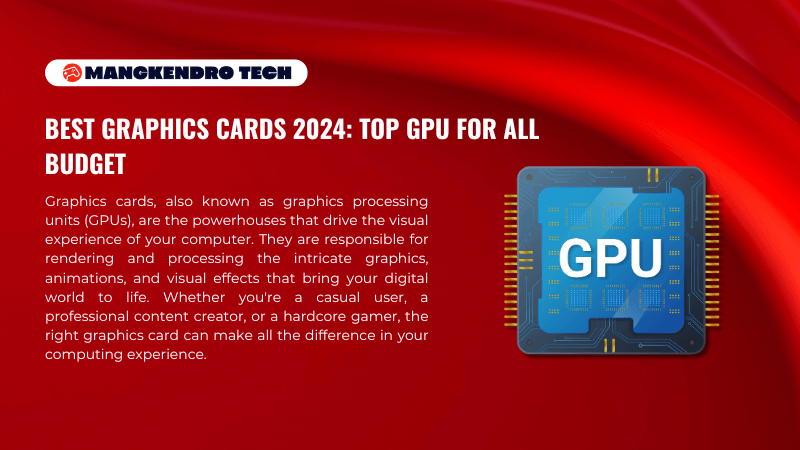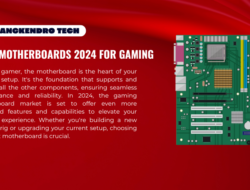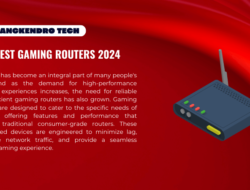Graphics cards, also known as graphics processing units (GPUs), are the powerhouses that drive the visual experience of your computer. They are responsible for rendering and processing the intricate graphics, animations, and visual effects that bring your digital world to life. Whether you’re a casual user, a professional content creator, or a hardcore gamer, the right graphics card can make all the difference in your computing experience.
Importance of Choosing the Right Graphics Card
Selecting the appropriate graphics card for your needs is crucial. The wrong choice can lead to subpar performance, compatibility issues, and a less-than-satisfactory user experience. On the other hand, investing in the right GPU can unlock a whole new level of visual fidelity, smooth gameplay, and enhanced productivity. In this article, we’ll guide you through the process of finding the best graphics cards for your specific requirements and budget.
Read More:
Factors to Consider When Buying a Graphics Card
When it comes to choosing a graphics card, there are several key factors you should consider:
- Performance: The GPU’s processing power, measured in FLOPS (Floating-Point Operations per Second), is a crucial indicator of its performance. Look for benchmarks and reviews to understand how different cards stack up in terms of gaming, content creation, and other demanding tasks.
- Memory: The amount of dedicated video memory (VRAM) a graphics card has can significantly impact its ability to handle high-resolution textures, complex scenes, and multi-monitor setups. More VRAM generally means better performance.
- Compatibility: Ensure that the graphics card you choose is compatible with your computer’s motherboard, power supply, and overall system configuration. Check the specific requirements and make sure your system can support the card.
- Power Efficiency: Modern GPUs are designed to be more power-efficient, reducing both energy consumption and heat output. This can be especially important for laptops and systems with limited cooling capabilities.
- Budget: Set a realistic budget that aligns with your needs and expectations. Graphics cards can range from affordable entry-level models to high-end enthusiast-grade options, so it’s essential to find the right balance between performance and cost.
Top Budget-Friendly Graphics Cards for 2024
If you’re on a tight budget, there are several excellent options for budget-friendly graphics cards that can still deliver impressive performance:
- NVIDIA GeForce RTX 3060: This mid-range GPU offers impressive value, providing excellent 1080p and 1440p gaming performance at a relatively affordable price point.
- AMD Radeon RX 6600 XT: Offering strong 1080p gaming capabilities and excellent power efficiency, the RX 6600 XT is a great choice for budget-conscious users.
- NVIDIA GeForce GTX 1660 Super: A step up from the standard GTX 1660, the Super variant delivers better performance and features at a reasonable cost.
- AMD Radeon RX 5500 XT: This entry-level GPU is an excellent option for casual gamers or users who prioritize affordability over the absolute latest and greatest performance.
Mid-Range Graphics Cards for Optimal Performance
If you’re looking for a balance between performance and value, the mid-range graphics card segment is where you’ll find the sweet spot:
- NVIDIA GeForce RTX 3070: This powerful GPU delivers exceptional 1440p gaming performance and can even handle 4K gaming in many titles.
- AMD Radeon RX 6800: Offering impressive rasterization performance and advanced ray tracing capabilities, the RX 6800 is a great choice for both gaming and content creation.
- NVIDIA GeForce RTX 3060 Ti: Sitting between the RTX 3060 and RTX 3070, the RTX 3060 Ti provides an excellent balance of price and performance.
- AMD Radeon RX 6700 XT: This GPU delivers outstanding 1440p gaming performance and can even handle 4K gaming in less demanding titles.
High-End Graphics Cards for Gaming Enthusiasts
For those seeking the ultimate in gaming performance, the high-end graphics card segment is where you’ll find the most powerful and cutting-edge options:
- NVIDIA GeForce RTX 3080: This flagship GPU is a powerhouse, offering exceptional 4K gaming performance and advanced ray tracing capabilities.
- AMD Radeon RX 6800 XT: Competing with the RTX 3080, the RX 6800 XT provides exceptional rasterization performance and impressive value.
- NVIDIA GeForce RTX 3090: The RTX 3090 is the ultimate enthusiast-grade GPU, offering unparalleled performance for demanding 4K and even 8K gaming.
- AMD Radeon RX 6900 XT: Challenging the RTX 3090, the RX 6900 XT is AMD’s top-of-the-line GPU, delivering exceptional performance for both gaming and content creation.
Future-Proof Graphics Cards for Long-Term Investment
If you’re looking to future-proof your system and ensure it can handle the demands of the coming years, consider these high-end graphics cards that offer exceptional long-term value:
- NVIDIA GeForce RTX 4080: The next-generation RTX 4080 is expected to deliver significant performance improvements over the RTX 3080, making it a compelling choice for future-proofing your system.
- AMD Radeon RX 7900 XT: AMD’s upcoming flagship GPU, the RX 7900 XT, is rumored to offer impressive performance and advanced features that can future-proof your system for years to come.
- NVIDIA GeForce RTX 4090: The RTX 4090 is the ultimate enthusiast-grade GPU, offering unparalleled performance that can handle the most demanding gaming and content creation workloads for years to come.
- AMD Radeon RX 7950 XT: As AMD’s top-of-the-line offering in the RX 7000 series, the RX 7950 XT is expected to deliver exceptional long-term performance and value for future-minded users.
Comparison of Top Graphics Card Brands
When it comes to graphics cards, the two leading brands are NVIDIA and AMD. Both companies offer a wide range of options, each with its own strengths and weaknesses. Here’s a quick comparison:
|
Feature |
NVIDIA |
AMD |
|---|---|---|
|
Performance |
Excellent, especially in ray tracing and AI-accelerated tasks |
Excellent rasterization performance, competitive in ray tracing |
|
Power Efficiency |
Generally more power-efficient |
Improving power efficiency, but still trails NVIDIA in some areas |
|
Feature Set |
Advanced features like DLSS, ray tracing, and AI-powered enhancements |
Competitive feature set, including ray tracing and advanced image upscaling |
|
Pricing |
Typically more expensive, especially at the high-end |
Offering more value-oriented options, especially in the mid-range and budget segments |
Graphics Card Benchmarks and Performance Tests
To help you make an informed decision, it’s essential to consult reliable sources for graphics card benchmarks and performance tests. These evaluations provide detailed insights into the real-world performance of various GPUs across a range of workloads and games. Some popular resources for this information include:
- Hardware review websites: Sites like Tom’s Hardware, Anandtech, and PC Gamer regularly publish in-depth graphics card reviews and benchmarks.
- YouTube channels: Channels like Gamers Nexus, Hardware Unboxed, and JayzTwoCents offer comprehensive GPU performance analysis and comparisons.
- Online forums: Communities like Reddit’s r/buildapc and r/hardware are great places to discuss and find user-reported graphics card performance data.
Conclusion
Choosing the right graphics card for your needs is a crucial decision that can make a significant difference in your computing experience. By considering the factors outlined in this article, you can find the perfect GPU that balances your budget, performance requirements, and future-proofing needs.
Whether you’re a casual user, a content creator, or a hardcore gamer, there’s a graphics card out there that can elevate your digital world. Take the time to research, compare, and make an informed choice, and you’ll be rewarded with a seamless and immersive visual experience.
Ready to upgrade your graphics card and take your computing experience to the next level? Check out our selection of the best graphics cards for 2024 and find the perfect fit for your needs and budget. Don’t settle for anything less than the performance you deserve – explore your options and make the most of your digital world.
FAQ
What is the difference between a GPU and a graphics card?
A graphics card and a GPU (graphics processing unit) are essentially the same thing. The GPU is the core component of the graphics card, responsible for rendering and processing graphics.
How much VRAM do I need for my graphics card?
The amount of VRAM you need depends on the resolution and complexity of the games or applications you’ll be using. For 1080p gaming, 4-6GB of VRAM is generally sufficient. For 1440p or 4K gaming, 8GB or more is recommended.
What is the difference between NVIDIA and AMD graphics cards?
Both NVIDIA and AMD offer excellent graphics card options, but they have some key differences. NVIDIA is generally known for its superior performance in ray tracing and AI-accelerated tasks, while AMD excels in rasterization performance and offers more value-oriented options.
How often should I upgrade my graphics card?
The frequency of graphics card upgrades depends on your needs and the pace of technological advancements. As a general rule, upgrading every 2-3 years can ensure you maintain a good level of performance and compatibility with the latest games and applications.
Can a graphics card be used for tasks other than gaming?
Absolutely! Graphics cards are also heavily used in professional applications like video editing, 3D rendering, machine learning, and scientific computing. The performance and features of a graphics card can be beneficial for a wide range of tasks beyond gaming.




